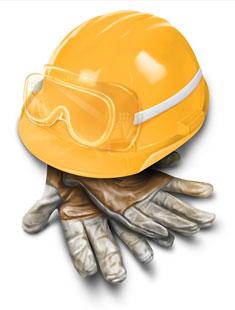A research study funded by the Institution of Occupational Safety and Health (IOSH) has culminated in a vital document that will shed light upon procedures that will help establishments to implement the health and safety laws that are best suited for their institution and employees. This research was executed by researchers from University of Ballarat, and researchers from Health and Safety Technology and Management in Birmingham.
The purpose of the guide, Management of Safety Rules and Procedures, is to encourage the senior level occupational and health professionals to review how the health and safety management can be improved and made more efficient. One of the things that the guide includes is nine steps that can be used to develop the most appropriate rules for the management. It also contains examples that give a picture of what an ideal management team looks like. The guide is also interesting in that it promotes health and safety as being a universal need and requirement and not, as it is stereotypically portrayed, unnecessary bureaucracy.
 Dr Luise Vassie of IOSH’s explains that the opinions of the employees of an institution are crucial in order to get an ideal health and safety system in place. This is because the workers have the first hand experience of working in their company and they, better than anyone else, know what the needs and goals of their jobs are. By listening to, and valuing, their input, the corporation will be able to come up with a health and safety plan that best meets the needs of their workers.
Dr Luise Vassie of IOSH’s explains that the opinions of the employees of an institution are crucial in order to get an ideal health and safety system in place. This is because the workers have the first hand experience of working in their company and they, better than anyone else, know what the needs and goals of their jobs are. By listening to, and valuing, their input, the corporation will be able to come up with a health and safety plan that best meets the needs of their workers.
This project’s aim was to help establishments make their safety policies more proficient by controlling and minimising risks. As stated by Professor Andres Hale, their goal is to help corporations get the maximum amount of protection that their employees needs according to the nature of their work. They also seek to minimise the number of rules, and to make them as simple as possible without exposing the workers to increased or unnecessary risks. With this guide, the professionals involved in making these health and safety rules receive a strategic plan that will help them reach this goal of minimal risk for their employees.
The research took into account the health and safety situation from two viewpoints. From the top down perspective, it took into consideration the rules made by managers that are always supposed to be followed. From the bottom up viewpoint, the rules are regarded as more flexible and something that is built upon with experience. The guide presents a plan that unites and combines both of these views, and it will help to implement practical rules which need to be put into action.
According to Professor Hale, consideration has to be put into the culture of the workplace itself in order to create rules which are relevant and effective. Rules that work for one place won’t necessarily be best for another. Adding to that, he also mentions that rules are not constant: they will constantly change with situations and time.
Along with examples and plans, this guide also contains literature reviews of previous studies that looked at rule making and management.
In order to make the best rules for any given workplace, knowledge about how the employees work is very important. This guide provides managers with that knowledge, and also shows a method that will help companies make health and safety rule sets, that gives their employees the protection they deserve. A copy of this research can be found here.
(Image Credit: Compliance and Safety)